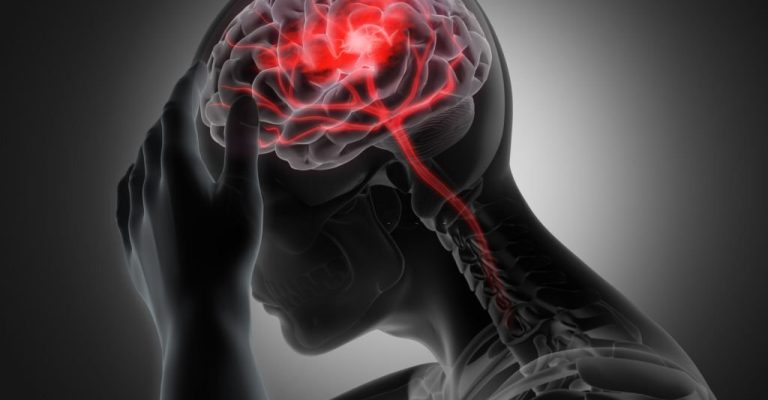
With the help of modern medicine and technology, stroke patients now have greater hope for recovery.
However, stroke surgery is a specialized field that offers numerous benefits to those suffering from this debilitating condition. While several types of intervention are available today, which type of procedure might be best for a particular patient depends on various variables.
In this blog post, we’ll explore the ins and outs of surgical options for stroke treatment. We’ll also provide an overview of current research into emerging treatments so you can make an informed decision about your care. Read on to learn more!
Several kinds of strokes may manifest in a variety of ways. The damaged area of the brain and the root problem are taken into account when classifying these disorders.
Recovery focuses on restoring abilities compromised by the stroke and optimizing self-care, whereas the underlying cause dictates management and treatment.
A transient ischemic attack (TIA), often known as a “mini-stroke,” occurs when the blood supply to part of the brain is cut off for an instant. It produces stroke-like symptoms.
Symptoms of a TIA often disappear in a matter of minutes up to several hours after the blood flow has been restored, preventing any permanent brain damage from occurring.
Stroke may develop after a TIA, and TIAs can reoccur within minutes or weeks. Suppose you have indications consistent with a stroke or a TIA.
In that case, you should seek medical assistance immediately since it is impossible to predict whether your condition will improve or be chronic.

The majority of strokes are ischemic. Stoppage of blood circulation via an artery supplying brain tissue results in ischemic stroke. As a result, brain cells suffer oxygen deprivation-related injury, and a region of death known as an infarction develops.
An embolic stroke is the blockage of a cerebral artery by a hematoma or lesion that has moved from another location. It most often occurs in the heart or the carotid artery, and coronary arteries in the neck that carry blood from the heart and oxygen to the cerebral cortex. Cholesterol and other substances that might cause emboli are contained in a plaque.
While embolic strokes often attack major cerebral blood vessels and result in widespread brain damage, they can also impact smaller cerebral arteries.
The formation of a thrombus in a cerebral artery is known medically as a thrombotic stroke. Atherosclerosis, or artery stiffening, may cause this condition. Hypertension, hyperglycemia, and excessive triglycerides all contribute to atherosclerosis.
While thrombotic strokes more often impact smaller blood arteries and result in more localized brain injury, they may sometimes be rather massive.
When brain tissue or blood vessels burst, it causes a hemorrhagic stroke. Brain injury occurs from both the bleeding and the decreased blood flow to certain areas of the brain that results from the stroke.
Hemorrhaging that occurs inside the brain is called an intracerebral hemorrhage. Ischemia-related bleeding or a ruptured blood vessel are two possible causes.
Intracerebral bleeding is dangerous because it may lead to ischemia, or brain tissue death, from a lack of blood flow. Edema and inflammation are other common side effects that may lead to dangerously high intracranial pressure.
Hemorrhagic strokes, also known as subarachnoid hemorrhages, are caused by the rupture or leaking of an artery or vein in the brain’s subarachnoid space.
This results in an accumulation of blood in the cerebral spinal fluid. Constant stress can lead to the narrowing of the ventricles and other brain structures. Also, the brain region that receives blood from the leaky artery may not get enough blood.
Symptoms of a subarachnoid hemorrhage include headaches, nausea, vomiting, and a general feeling of unwellness. Aneurysms are protruding arterial defects that may cause a subarachnoid hemorrhage if they burst or leak.
Ischemic strokes occur more often than any other kind—a stroke results from the obstruction of a cerebral artery. The majority of people who suffer from this form of stroke have damaged arteries.
Plaques are fatty deposits that develop on the arterial wall due to the accumulation of lipids, cholesterol, as well as other chemicals over time. The arteries may harden and become less flexible as a result.
The plaques might get detached at times. This may cause blood clots or plaque pieces to lodge in narrow arteries.
The carotid arteries, which run down the sides of your neck and supply the majority of blood to your brain, are particularly vulnerable to plaque accumulation. Therefore, surgical intervention to unblock a carotid artery may be recommended if one of these arteries is partially occluded.
Your doctor will determine the extent of the obstruction using imaging testing. Examples of such examinations might be:
It is possible that surgery might benefit those who have had a stroke or are showing signs of having a stroke if an artery is clogged by more exceeding 50%.
The following factors may also disqualify you as a good fit:

After a stroke, various considerations must be made before deciding whether or not to proceed with surgery. Pre-stroke physical health, stroke severity, and mental and emotional state all affect treatment.
The most important thing to consider is whether or not surgery would make life better for you or a beloved one. The following list of the types of operations with established histories of success might assist in addressing that issue.
After a severe stroke, the brain swells dramatically because the blood supply is suddenly cut off. Brain injury is caused by the buildup of intracranial pressure as a result of the swelling within the skull. Hemicraniectomy is a potentially life-saving procedure when that pressure reaches dangerous levels.
Hemicraniectomy, in which 50% or more of the patient’s skull is removed, relieves brain pressure caused by fluid collection. This is essential since brain swelling may lead the brain to push against the skull, leading to serious brain damage from both touch and pressure.
The brain’s swelling may be managed by detaching a portion of the skull and giving it a chance to grow, after which the frozen bit can be stitched back to its original location.
Yet, while this procedure has a track record of success, it cannot guarantee that even the most severe patients would improve after surgery. Individuals over 60, with severe strokes, or in poor health before surgery may not be excellent candidates for this operation.
Cerebral Revascularization, or Bypass Surgery, restores blood flow to a brain region blocked by a clogged carotid artery. Neurosurgeons remove skull arteries and divert them to restore brain blood flow.
Brain function returns to normal as blood flow is restored and symptoms disappear. This procedure may be an option for individuals with recurrent TIAs or mini-strokes when considering prophylactic measures.
This operation, called a Carotid Endarterectomy, is performed on patients who have decided to pursue the usual route with carotid surgery. This procedure eliminates the obstruction and enlarges the artery in much the same way as angioplasty does.
In addition, surgeons may clear the arteries of plaque to improve the flow of blood to the brain. Like angioplasty, this treatment may be used to either prevent or treat strokes.
A cerebral aneurysm may develop and lead to a stroke. Blood pools within the weakened area as the arterial wall weakens, creating a balloon-like protrusion.
Blocking blood supply to the brain due to this accumulation may have devastating effects. Aneurysms may be treated with either surgical clipping or endovascular coil embolization.
During a technique called an aneurysm clipping, the blood supply to the aneurysm is temporarily severed. This helps to stop the aneurysm from spilling any more blood. Patients undergoing this procedure often need to spend several days in the intensive care unit (ICU) following surgery.
The choice of surgery is an individual one based on multiple factors, primarily the type cause of stroke. A discussion with your healthcare provider will help you decide which procedure is best suitable for you.
Surgery is a major decision and should not be taken lightly, so make sure to get all the facts before making a decision that could affect your health.
References:
https://medlineplus.gov/stroke.html
https://www.ncbi.nlm.nih.gov/pmc/articles/PMC3234107/
https://www.ncbi.nlm.nih.gov/books/NBK559173/
https://www.ncbi.nlm.nih.gov/books/NBK11042/
https://www.ninds.nih.gov/questions-and-answers-about-carotid-endarterectomy
https://www.ncbi.nlm.nih.gov/pmc/articles/PMC6517544/
https://www.ncbi.nlm.nih.gov/pmc/articles/PMC7965621/